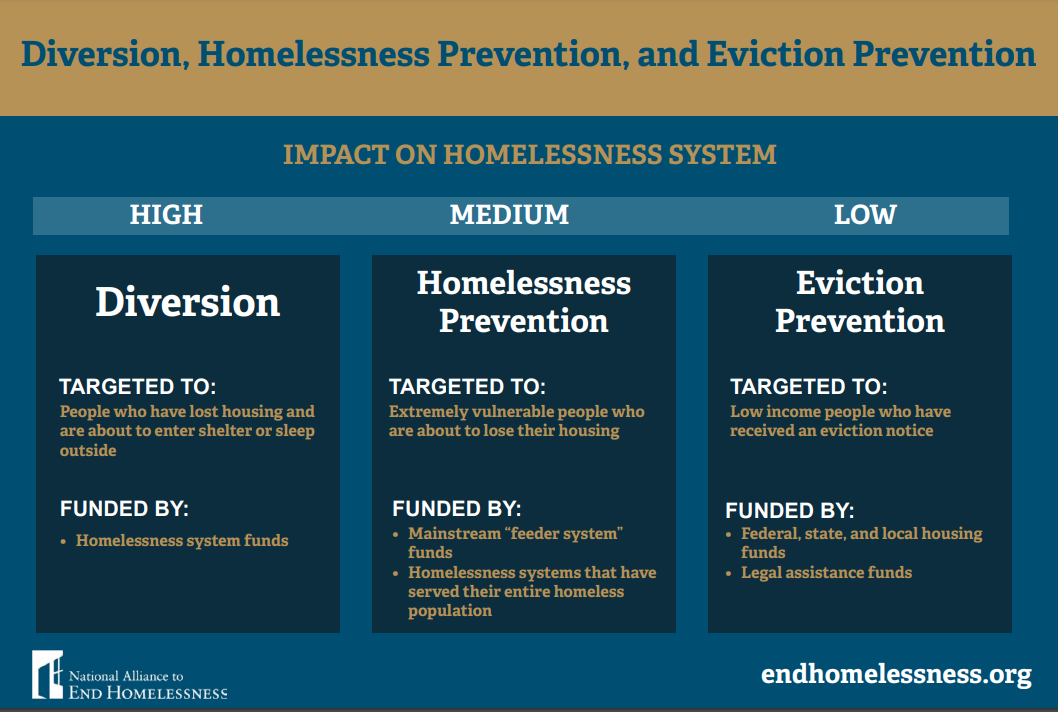Shelter Diversion/Rapid Exit
The intent of diversion is to give someone who has become homeless a positive alternative to entering emergency shelter or being unsheltered.
Shelter can be traumatic, unhealthy, and unsafe. Some data show that people who enter shelter experience longer periods of homelessness than those who are diverted from it. No matter how well-run shelter is, clients prefer to be in housing, and housing is more likely to improve their well-being. Likewise, being unsheltered has high risk of negative health outcomes and involvement with the criminal justice system (such as being ticketed or fined for sleeping on the streets).
Diversion is also a much more effective intervention from the perspective of homeless services systems and ending homelessness. Diversion stems the inflow into shelter; every person diverted makes a shelter bed available for someone else who needs it. It is considerably less costly, on average, than a shelter stay. Diversion avoids the emergency-related costs of unsheltered homelessness including ambulance use, sanitation, and interaction with law enforcement. (National Alliance to End Homelessness, 2020)

